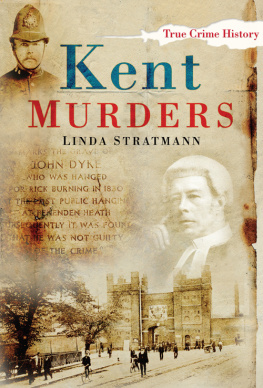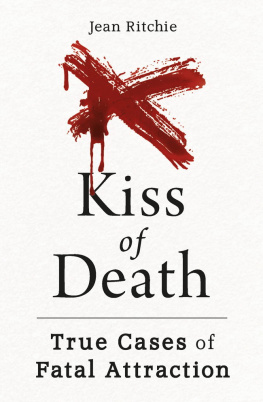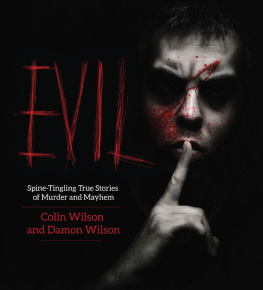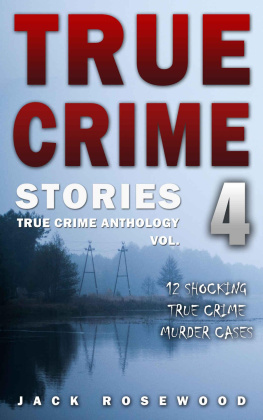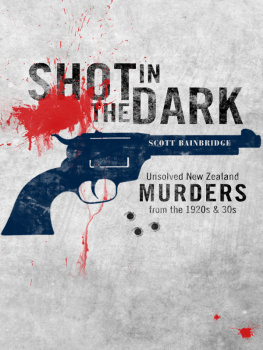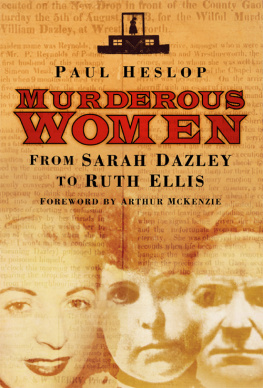Copyright
First published in 2013
The History Press
The Mill, Brimscombe Port
Stroud, Gloucestershire, gl5 2qg
www.thehistorypress.co.uk
This ebook edition first published in 2013
All rights reserved
Nicola Sly,2013
The right of Nicola Sly to be identified as the Author of this work has been asserted in accordance with the Copyright, Designs and Patents Act 1988.
This ebook is copyright material and must not be copied, reproduced, transferred, distributed, leased, licensed or publicly performed or used in any way except as specifically permitted in writing by the publishers, as allowed under the terms and conditions under which it was purchased or as strictly permitted by applicable copyright law. Any unauthorised distribution or use of this text may be a direct infringement of the authors and publishers rights, and those responsible may be liable in law accordingly.
EPUB ISBN 978 0 7524 9221 6
Original typesetting by The History Press
Contents
Cheam, Surrey, 1828
Middlesex, 1847
Old Meldrum, Aberdeenshire, 1857
Rochester, Kent, 1858
Ipswich, Suffolk, 1858
St Budock, Cornwall, 1859
London, 1861
Manchester, 1863
Batley, West Yorkshire, 1865
Birmingham, Warwickshire, 1866
Wood Green, London, 1869
Southsea, Hampshire, 1872
Glasgow, 1876
Dolgellau, North Wales, 1877
Clerkenwell, London, 1879
Douglas, Isle of Man, 1892
Woodhouse Mill, near Sheffield, South Yorkshire, 1893
Blackburn, Lancashire, 1893
Wormwood Scrubs, London, 1893
Bolton, Lancashire, 1893
Burnley, Lancashire, 1915
Bristol, 1917
/p>
Camden Town, London, 1918
Central London, 1923
Knightsbridge, London, 1932
Lancaster, 1935
Letchworth, Hertfordshire, 1937
Luton, Bedfordshire, 1943
London, 1955
Introduction & Acknowledgements
The term crime of passion usually refers to a violent crime, especially murder, which is committed because of sudden strong impulse, rather than as a premeditated crime. Sometimes described as a red mist descending, it frequently results from an overwhelming rush of emotion, such as jealousy or anger, or after extreme provocation and is often said to occur in hot blood, the perpetrator acting immediately upon the rise of passion, without the time for contemplation or for allowing the blood to cool.
The following is a collection of true historical accounts of murder committed in so-called hot blood, drawn entirely from the contemporary newspapers listed in the bibliography at the end. Although, much as today, not everything was reported accurately and there were frequent discrepancies between publications, with differing dates and variations in names and spelling, a common theme emerges in the blink of an eye, lives are needlessly terminated and men and women are left to rue the consequences of a momentary loss of self-control.
I would like to thank Matilda Richards, my commissioning editor at The History Press, for her help and encouragement in bringing this book to fruition and, as always, my husband Richard remains a constant source of support and constructive criticism.
Every effort has been made to clear copyright; however, my apologies to anyone I may have inadvertently missed. I can assure you it was not deliberate but an oversight on my part.
Nicola Sly, 2013
1
I am afraid I have shot my wife
Cheam, Surrey, 1828
William Wittman was a poor physical specimen of a man. He was short in stature and having once broken his back in an accident, he was also a hunchback, who was not perfect in his limbs. A former holder of a very lowly position in the Excise Office, he lived in Walworth with his wife Sarah and their son, William junior. The couple lived very unhappily together Sarah, who was said to be from the most degraded walk of society, was younger than her husband, very strong and robust and possessed a fearsome temper.
The death of Williams father enabled him to give up work and live on the income from properties bequeathed to him in his fathers will. He moved Sarah and five-year-old William to a cottage in Cheam but sadly the couples relationship worsened when both husband and wife began to drink heavily. Sarah frequently used violence on her rather weedy husband and towards the end of 1828 William was driven to apply to a magistrate for a warrant against her for assault. He described several instances of his wifes violent conduct, showing the chief constable cuts and bruises to illustrate his allegations and saying that he constantly went in absolute danger of his life. He claimed to be in mortal fear of his wife, saying that if he wasnt protected in some way or another he felt sure she would end up killing him. Unfortunately, the magistrates could do little to help Wittman and he was advised to go to magistrates at Epsom, that being the nearest town to his home.
Whether or not William ever consulted the Epsom magistrates is not known but he continued to complain of Sarahs violence towards him and, on one occasion, tried to persuade a friend to go home with him, since he was too afraid of his wifes uncontrollable temper to go alone. Sadly, the friend had other commitments and soon afterwards the situation between the warring Wittmans came to a head, with tragic consequences.
When the couple first moved to Cheam, they employed a young servant girl. The Wittmans made some improvements to their new home, employing a plumber and painter named Prosser, who quickly moved into the cottage as a lodger and began a dalliance with the servant. It is easy to imagine that the virile Prosser might have proved more sexually attractive to Sarah Wittman than her crippled, deformed husband and before long she dismissed the maid and took the girls place in Prossers bed. When Wittman protested, Sarah exploded in a rage and whenever he tried to remonstrate with her about the impropriety of her conduct, she physically attacked him, hitting him with a poker, smashing a chair over his head and destroying everything around her in an uncontrolled fury. Eventually, Wittman seems to have come to view Prosser as an ally rather than an enemy and, on occasions when Sarahs temper reached its crescendo, her husband would take refuge in Prossers bedroom, sharing his bed until Sarahs wrath abated.
In December 1828, Sarah destroyed all of the couples silver spoons in a temper and smashed three family pictures to smithereens. Nevertheless, when her husband became aware that she had slept in Prossers bed on the night of 11 December, he felt obliged to ask her about it. Sarah immediately snatched up a poker from the fireplace and hit her husband twice on the head, stunning him. One of Wittmans hobbies was shooting small birds in his garden and he usually kept a loaded gun handy for taking outside. Now, he realised that Sarah was going for the gun, which stood in the corner of the back parlour. He grabbed her and the couple grappled for possession of the weapon for a few moments before the gun went off, shooting Sarah in the face.
As soon as Wittman realised that his wife was shot he ran to the back door, finding it locked and the key not in its normal place. Knowing that the front door was always kept locked and anxious to get help as quickly as possible, Wittman scrambled out of a window and ran to the home of his nearest neighbour, Mathew Stedman, telling him that there had been a terrible accident and begging him for assistance. I am afraid I have shot my wife, he told Stedman, blood streaming down his face from the cuts on his head. Look at my head. See how I was struck. I fired the gun afterwards in the heat of passion, Wittman continued excitedly.
Stedman and two friends who were at his house that evening went back to the Wittmans cottage with him, climbing in through the open window. There was a lamp burning on the table, which Wittman picked up, using it to light their way into the kitchen, where Sarah lay partially dressed on her back on the floor near to the fireplace. William Perkins knelt down beside her and felt for a pulse. It does not beat, she is quite dead, he declared.





